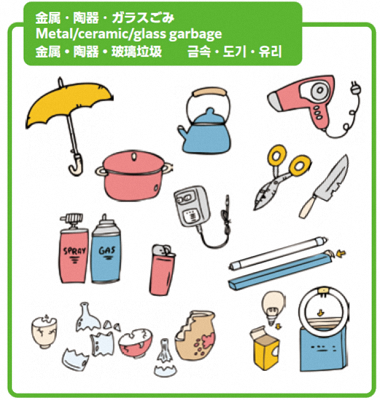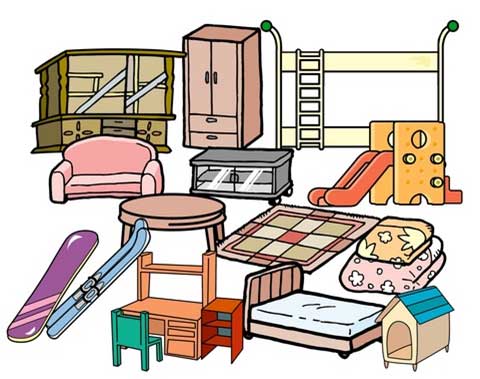Summary:
Japan has a strict and detailed garbage separation system.
Each city or town in Okinawa (such as Okinawa City, Chatan, and Yomitan) has its own rules for sorting, bag colors, and pickup days.
The guide attached on the bottom of the page can help you understand the basic categories, how to prepare your trash, and where to find more information in English.
🏠 1. Why Proper Trash Separation Matters
Trash separation is required by Japanese law under the Waste Management and Public Cleansing Act.
Correct separation helps reduce landfill waste and allows recycling plants to process materials efficiently.
Improper sorting can lead to non-collection, warning stickers, or even penalties in severe cases.
♻️ 2. Main Trash Categories in Okinawa
While exact rules differ slightly between military inspected properties, Okinawa follows these five main categories:
| Category | Japanese Name | Examples | Bag Type |
|---|---|---|---|
| Burnable Trash | 可燃ごみ (Kanen gomi) | Food scraps, paper, tissues, small wood pieces | Clear or semi-transparent bag |
| Non-Burnable Trash | 不燃ごみ (Funen gomi) | Ceramics, small electronics, glass, metal | Clear or semi-transparent bag |
| Recyclables | 資源ごみ (Shigen gomi) | Cans, bottles, PET bottles, cardboard, paper | Clear bag or bundled |
| Bulk Trash | 粗大ごみ (Sodai gomi) | Furniture, appliances, bicycles, futons | Sticker required |
| Hazardous Waste | 有害ごみ (Yūgai gomi) | Batteries, bulbs, lighters | Separate small bag |
⚠️ Each municipality has different bag colors and schedules. Always check your local “Garbage Calendar (ごみカレンダー)” for pickup days.
🔥 3. Burnable Trash (可燃ごみ / Kanen Gomi)

Includes:
Food scraps
Paper and tissues
Small wooden items
Old clothes (in small amounts)
Do not include:
Plastics with recycling marks
PET bottles or cans
Electronics
💡 Drain liquids and wrap food waste to avoid odor or pests.
Place at collection point by 8:00 AM on pickup day.
🧱 4. Non-Burnable Trash (不燃ごみ / Funen Gomi)

Includes:
Ceramics, metal utensils, small tools
Broken glass or mirrors (wrap and label “キケン / Danger”)
Small appliances (e.g., hairdryers, toasters)
⚠️ Large appliances (e.g., fridge, TV) must be handled separately as Appliance Recycling (家電リサイクル).
♻️ 5. Recyclables (資源ごみ / Shigen Gomi)

Common recyclable types:
Cans: Rinse and drain.
Bottles: Remove caps and labels.
PET bottles: Rinse, flatten, and remove caps.
Paper & Cardboard: Tie with string, not tape.
Milk Cartons: Cut open, rinse, and dry.
⚠️ Contaminated recyclables may be rejected — always rinse before disposal.
🛋️ 6. Bulk Trash (粗大ごみ / Sodai Gomi)

For large household items such as furniture, futons, or large electronics:
Disposal Procedure:
Contact your city office to make a pickup reservation.
Buy a disposal ticket (ごみ処理券) from a convenience store.
Attach the ticket visibly to the item.
Place it at the designated area on collection day.
💡 If you are a military member please contact submit a bulk trash pick up request through the maintenance request form.
⚠️ 7. Hazardous Waste (有害ごみ / Yūgai Gomi)
Includes:
Batteries
Fluorescent bulbs
Lighters
Spray cans (completely empty)
⚠️ These items must be separated into a small transparent bag and marked clearly.
Mixing them with regular garbage can cause fires during collection.
Comments
0 comments
Please sign in to leave a comment.